A major tourism attraction, touring the Wits Sterkfontein Caves ahead of the public reopening (Wed, Apr 16) reminded us how awe-inspiring it is to connect to the region's history and heritage in such a visceral way. While the caves are now fully managed by Wits under the Faculty of Science, with plans to buff up the tourism offering alongside more immersive research and educational experiences, our guide Trevor Buthelezi quipped before we made our descent, "The caves are the caves. Not much has changed. It'll take another two million years for that."
That's precisely the beauty of a site like this, especially in contrast with a city like Joburg, where not even street names manage to keep their names for very long. This dolomitic limestone cave system, on the other hand, formed approximately 20 to 30 million years ago. What's been mapped of this to date extends over 2.5 kilometres.
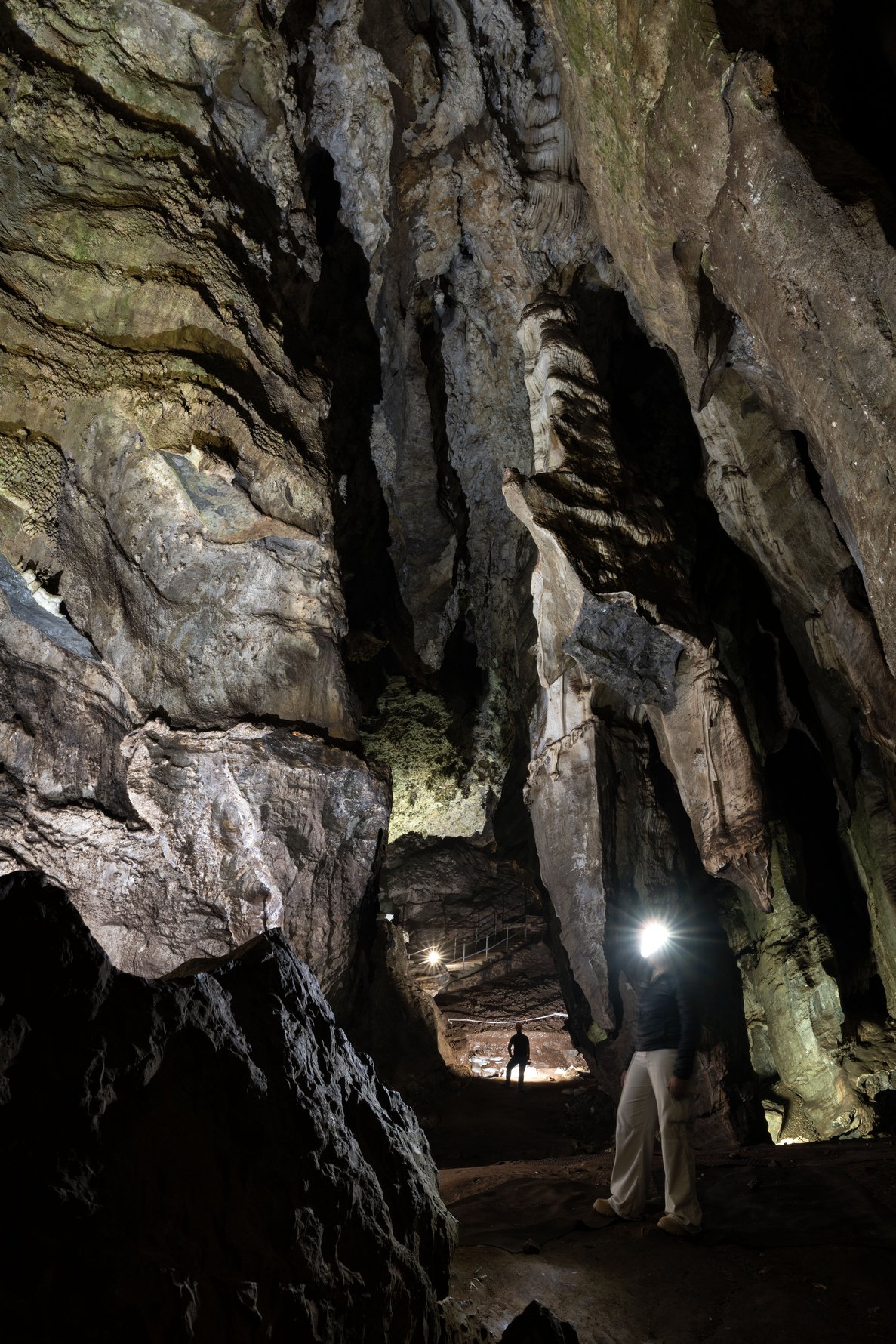
The Sterkfontein Caves are a time capsule in the truest sense and have played a crucial role in our understanding of human evolution; not just in Joburg or even the country, but around the world. One of the most famous hominin fossils ever found, "Mrs Ples", was discovered at Sterkfontein in 1947. This nearly complete skull of an Australopithecus africanus dates back approximately 3.4 million years. A later discovery dating back approximately 3.67 million years, "Little Foot" is an almost complete Australopithecus skeleton found between 1994 and 1998. It's the oldest hominin in Southern Africa and the most complete hominin skeleton yet found.
These discoveries, and others like them, including the 2.5 million-year-old Taung Child skull that was found by quarrymen at the Buxton Quarry in 1924 and identified as a new species of hominin (first named as Australopithecus africanus by Professor Raymond Dart), have captured the imagination and intellectual curiosity of the entire planet. South Africa as a whole is famous for its fossil finds in places like the Karoo and the Drakensberg, which go back to a different time scale – approximately 240 million years ago, in the case of one Diictodon (reptile-like mammal) fossil found in the Karoo National Park. But it's the hominin fossils that make the Cradle of Humankind so special, and which place South Africa at the centre of humanity's origin story.

At the media tour to kick off a new era for this auspicious site, our group made our way down into the Elephant Chamber for a briefing with representatives from Wits, including Geography, Archaeology, and Environmental Studies Professor Dominic Stratford, who spoke to the history of the caves. "The Sterkfontein Caves really started its contribution as an economic resource for the growing Johannesburg based on the lime mining industry, and in 1936 it started to change to a more intellectual contribution," Stratford told us. "For the last 89 years, these caves have made significant and seminal contributions to the study of human origins, ever since the first adult Australopithecus was discovered here by [paleontologist] Dr Robert Broom."
Just the right mechanisms are at play to make Sterkfontein Caves so rich in fossils: it's a comparatively large cave system with about five kilometres of intersecting chambers and passages, and several entrances which have been active in the past. "The preservation is almost perfect," says Stratford. "When caves have many openings and are as big as this, the likelihood of things falling in is very high, whether it's our human ancestors or the animals that were coexisting with them. As they decompose, they get preserved by the calcium carbonate that drops on them. When animals die on the land's surface, their bones decay, and they don't get preserved in the same way."
Sterkfontein is an active excavation site, and you may see people at work when you visit for a guided tour. Ongoing excavations here and in the surrounding areas continue to add to the bank of invaluable materials, stored in the Wits fossil vault, which draw international teams of researchers to South Africa for their study. In March 2025 a discovery was published of the first articulating leg of a Paranthropus robustus (another species of prehistoric hominins) found at Swartkrans Cave, a kilometre northwest of Sterkfontein.
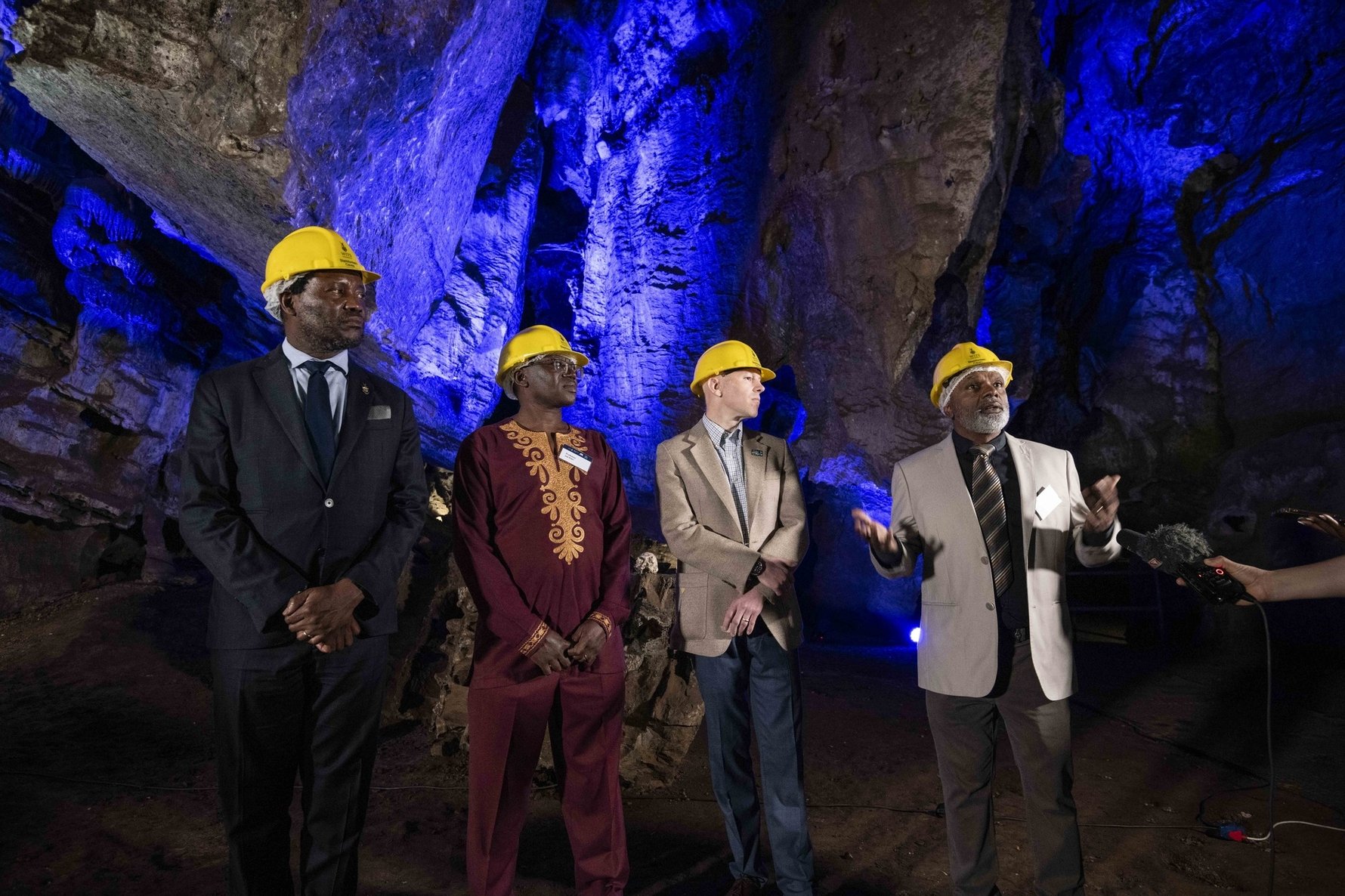
"This is not simply a place for entertainment. Of course, we welcome the public to enjoy what we have here. But this is also an active research site – there is enormous potential for exploring academic work [in the Sterkfontein Caves] and the Cradle of Humankind," says Wits University’s Vice-Chancellor and Principal Professor Zeblon Vilakazi, who sees this endeavour as research-led. "All other aspects flow from that," he explains.
Palaeoanthropologist Dr Job Kibii is the new Head of the Sterkfontein Caves and will spearhead the employment of technologies such as micro CT scanning and AI to accelerate the pace of research. "Micro CT scanning assists in digitally excavating the fossils," he told us. "Scientists used to analyse fossils by looking at the surface morphology, but they were not seeing what is internal in each of these specimens. With micro CT, you can look at the internal aspects and tell the growth patterns and changes that have happened." This tech can be applied to the tens of thousands of fossils that have been discovered at Sterkfontein, enriching what is gleaned from them.
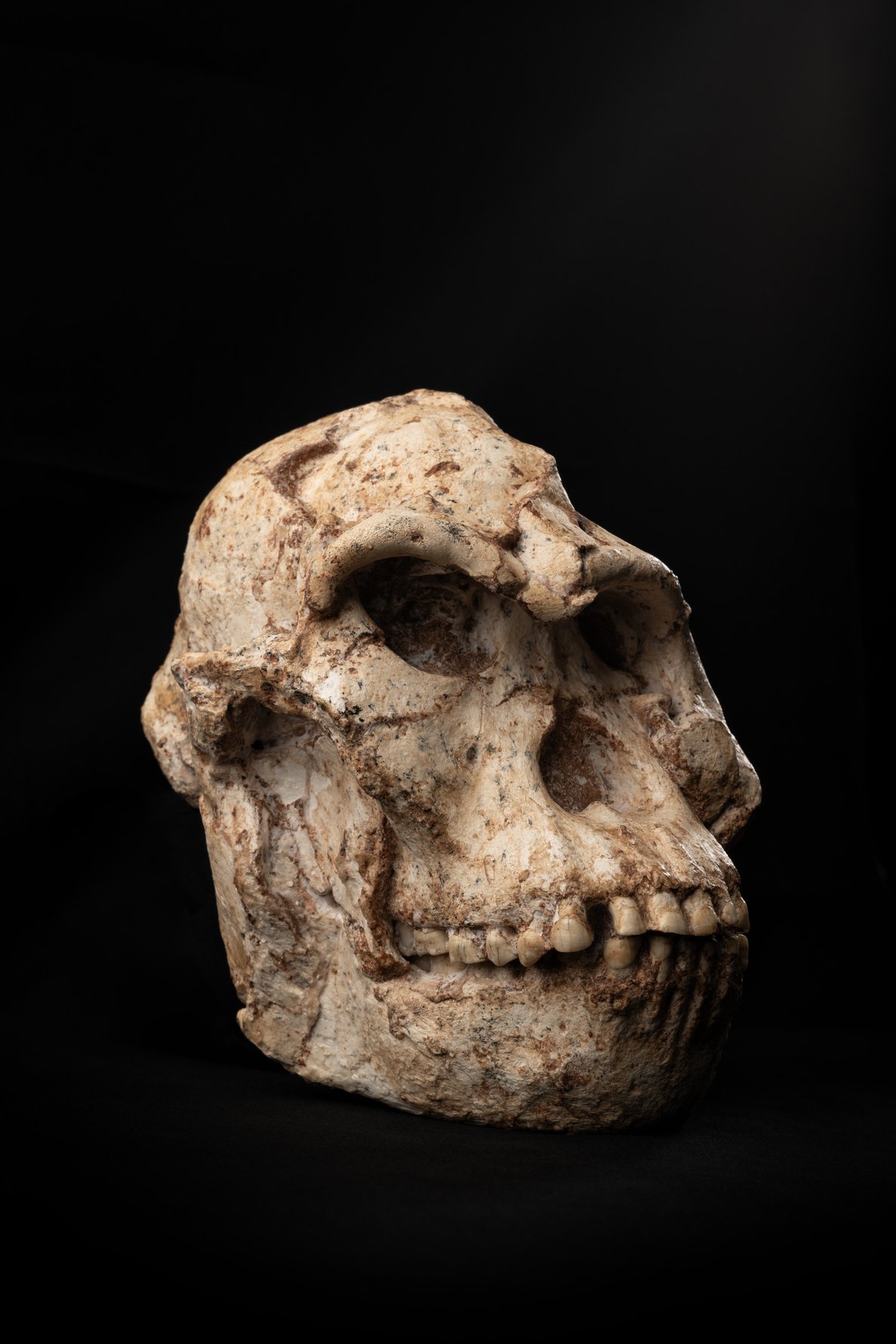
"The other interesting technology is AI and machine learning," says Kibii. AI and robotics can be used to 3D scan and map the entire cave system, and, with machine learning, it may be possible to categorise fossils according to their attributes to make identifying them easier. This is opposed to physical comparisons, which involve sifting through drawer after drawer of materials in the lab to find the closest match.
It's not about tech for tech's sake, though. Kibii and the team have their sights set on an interdisciplinary and decidedly people-oriented approach. Scientists and researchers from other fields, like botany and ecology, will be invited, and they will embrace other departments, such as civil engineering, for instance, to look into the ways that dolomite systems like this could impact future construction projects. Because of the sheer volume of hominin fossils, a larger base of scientific experts from around the world is needed to study them. Wits welcomes this as a springboard for innovation, knowing that the unique requirements of the Sterkfontein Caves could give rise to the development of new technologies.
Continuous preservation efforts and technology also go hand in hand. "We are concentrating on various portions because we know that as technologies change, people will come up with new ways of excavating," says Professor Nithaya Chetty, the Dean of the Wits Faculty of Science. "Then they will find those deposits that we have sampled. We know where they are, but haven't touched them yet. We are doing that intentionally, preserving them for the next generation that will come. Maybe they don't even need to excavate. Maybe there will be a way they can just take a photo beneath the ground and see what is there and analyse it. You never know. Things are changing very, very fast."
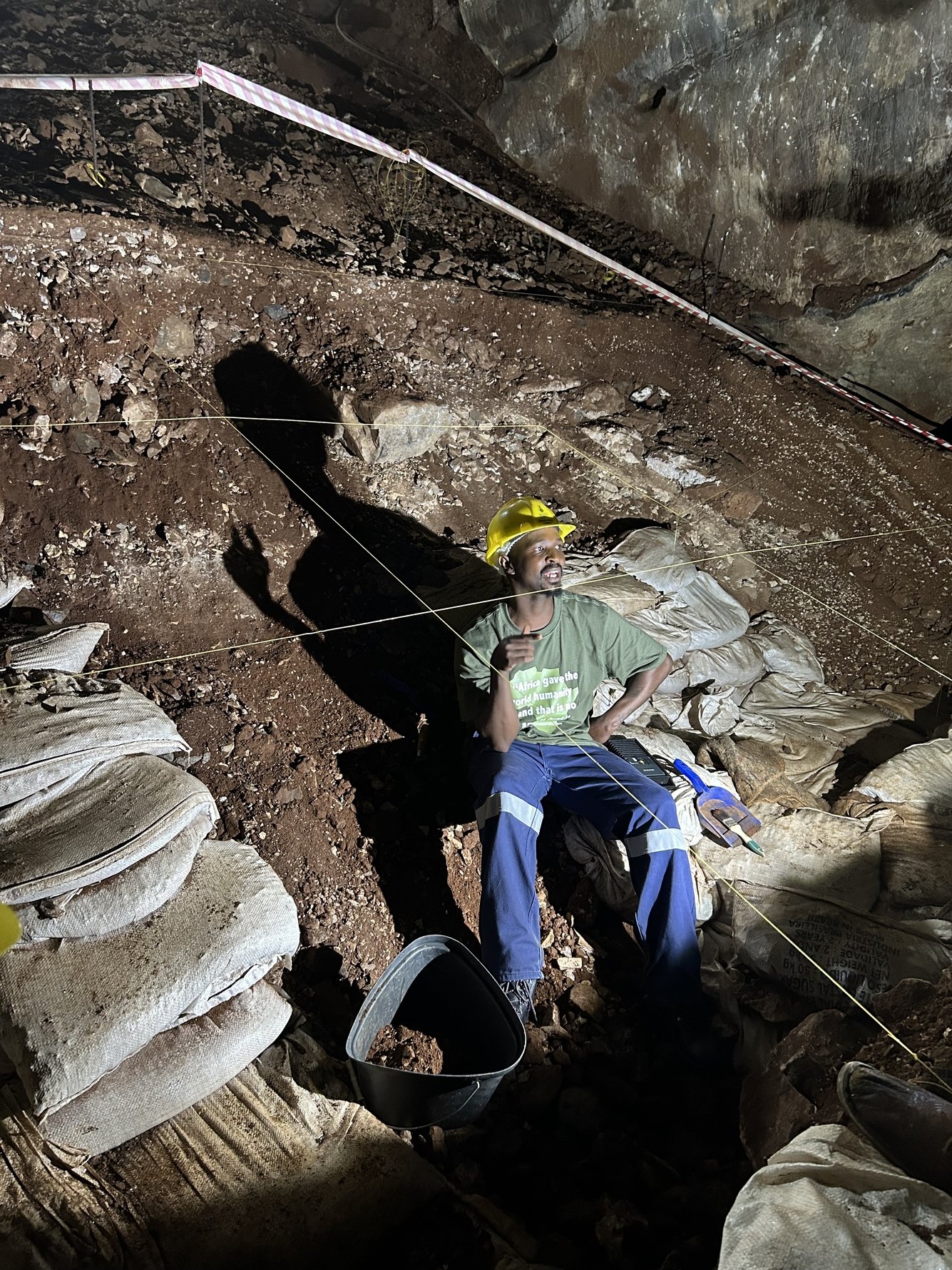
In a site this vital, there's a fine balance between access and preservation. "If I roll the clock backwards 100 years, they were using dynamite in here. That's how this place was discovered," Chetty says. "People were very reckless in how they went to forage for calcium products for the cement industry to build up Johannesburg." Today, even getting foot traffic needs to be controlled and managed very carefully. "We have a huge responsibility to protect this resource for future generations. And so from the scientific point of view, that's an extremely important part of our agenda," Chetty tells us.
For the public-facing side of the Sterkfontein Caves, this will be the first time they are opening their labs to visitors to interact with fossil preparators to see what it takes to release specimens from rocks and how fossils get preserved, and to engage with scientists conducting research there. The guided cave tour remains central to the experience, now with an enhanced scientific context as you make your way through the different chambers and passageways.
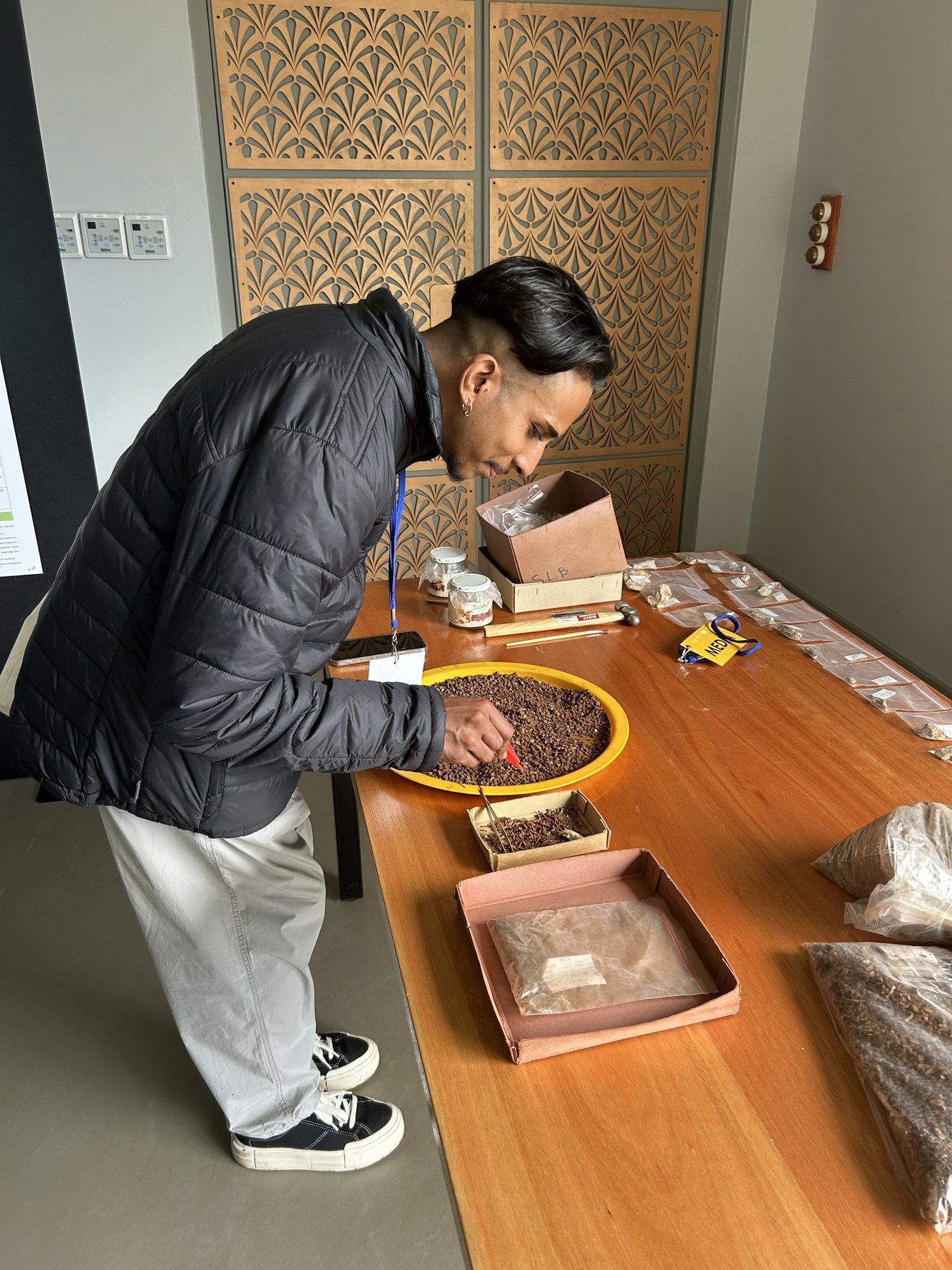
It is worth spending at least an hour at the on-site museum, and there is a new temporary exhibition space with rotating displays. On our visit, this featured a cast of Little Foot and a mini excavation station where you can sift through sediment from the caves. As Stratford told us when he demonstrated this, a lot of what you'll find is rodent bones brought in by owl droppings – no doubt a less glamorous side to the job.
This ancient site now has high-speed internet, allowing real-time excavations to be broadcast to the world. All of this is part of Wits' open-science agenda. There's no use in harvesting fossils and keeping them a secret. As Chetty says, "They're not ours. Wits is the custodian, but they belong to the county."
The caves are wondrous, and something we recommend every Joburg resident and visitor experience at least once. As a reviewer on Tripadvisor says, "These caves are like descending into another world." Book a tour of the Sterkfontein Caves here.
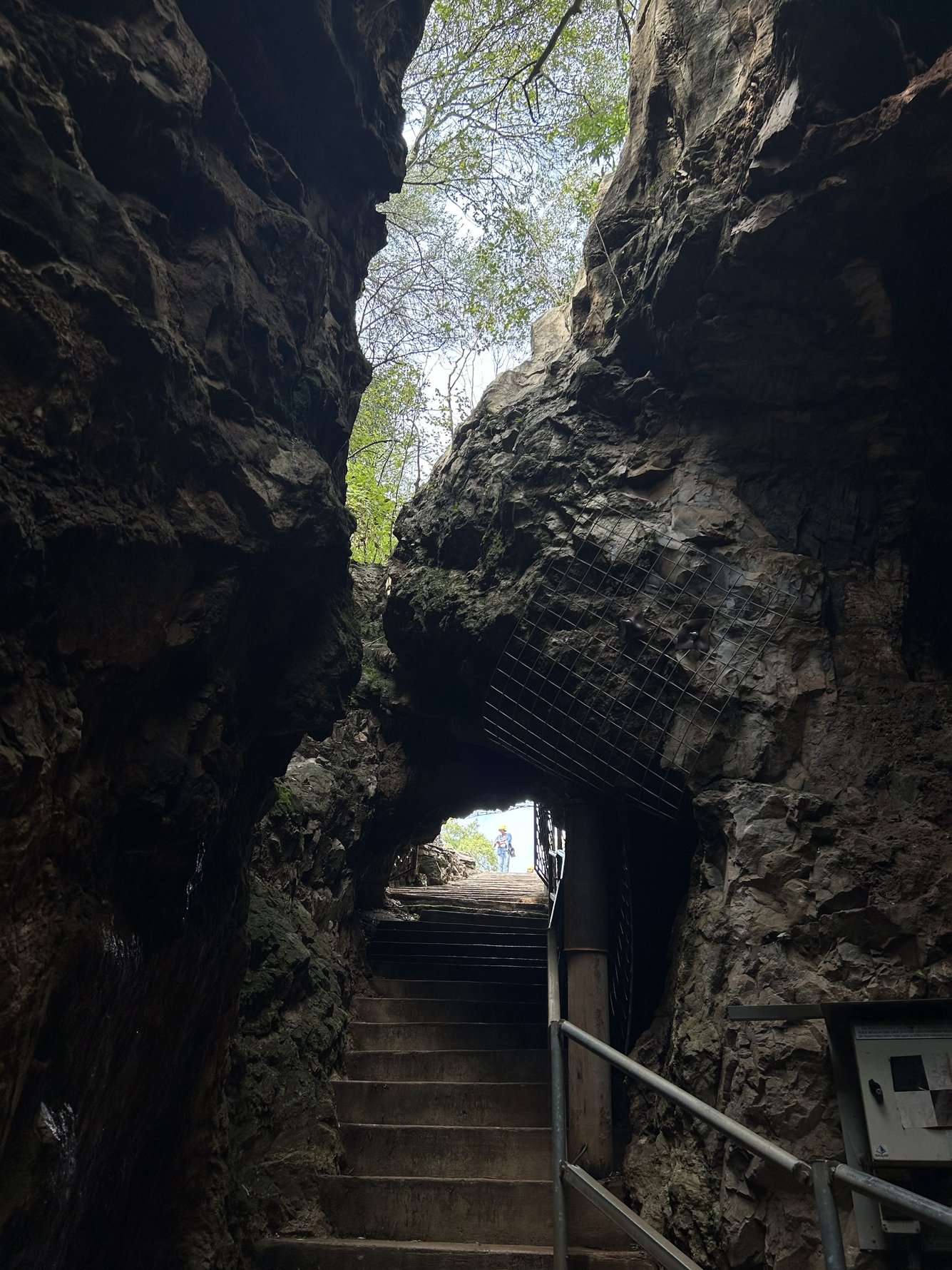
From far below ground and up into the universe and beyond, 2025 has been a big year for Wits – with February 2025 marking the reimagining of another major landmark, Joburg's planetarium, as the Wits Anglo American Digital Dome. This followed a closure in 2022 that gave way to structural improvements and technological upgrades.
Keep reading for a more detailed overview of the Sterkfontein Caves, their history and significance, and the upgrades that were made before the public reopening. Plus, find everything you need to know to plan your visit.
The Sterkfontein Caves history and significance: From 1896 to 2025
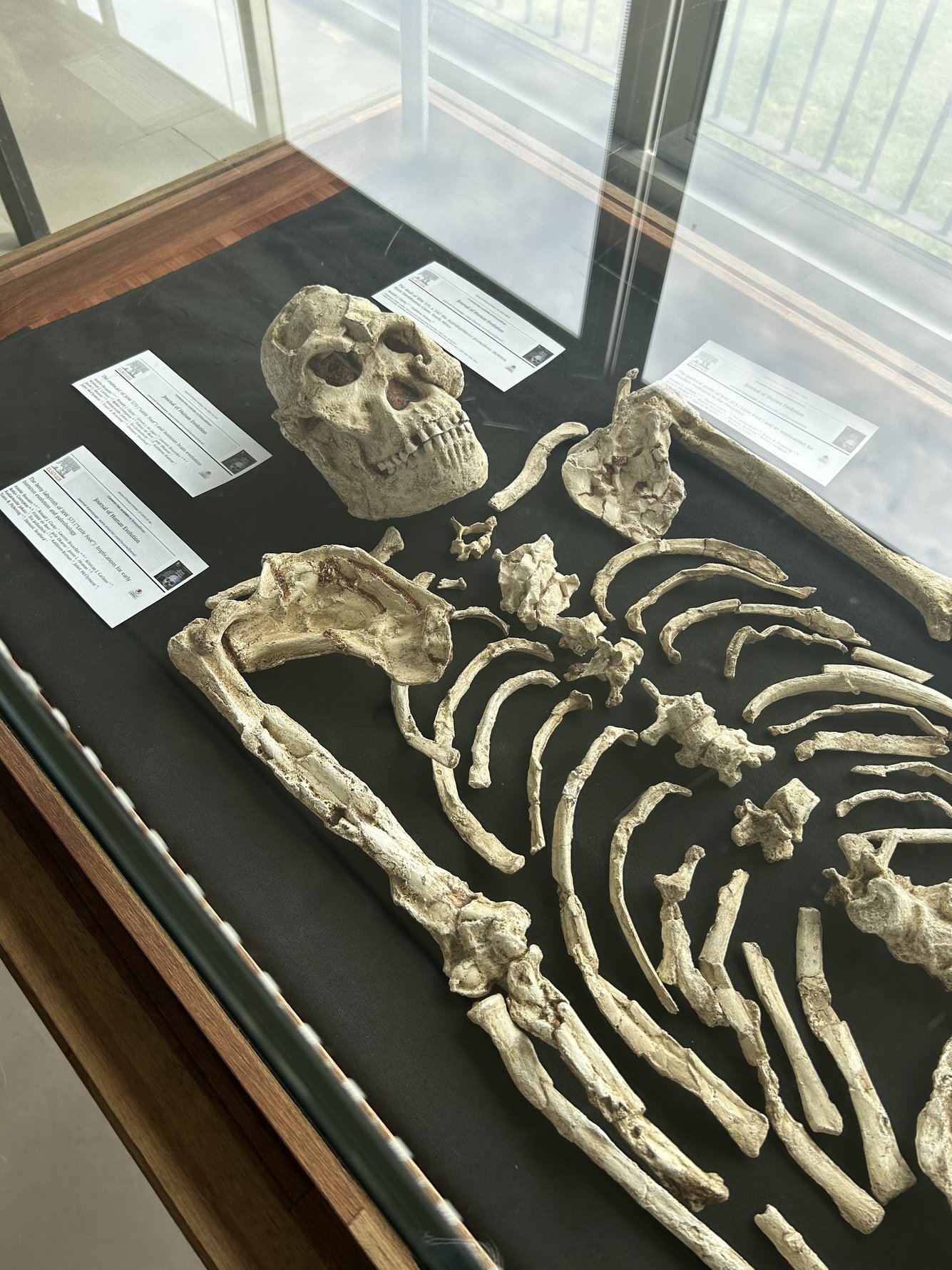
The Sterkfontein Caves comprise a set of dolomitic limestone caves. They are significant because they have brought the world some of the most important paleontological discoveries. It is believed that these caves hold many more secrets, and that continued research will yield even more fascinating finds. To quote Professor Dominic Stratford, "People often ask if there are still fossils to find – and we’ve only just scratched the surface. We’ve only mapped around five kilometres of passages, and every chamber holds potential."
The history of the Sterkfontein Caves began as a mining ground for limestone. They were first discovered in 1896, when Italian prospector Guglielmo Martinaglia blasted into them with dynamite so that he could remove the stalactites and stalagmites. Containing pure calcium carbonate (a chief component in limestone), these were used to make cement, which was necessary to support the burgeoning industry in Joburg. The caves continued to be exploited for more than 30 years after their discovery. Countless stone tools and fossils were either destroyed or dumped, in addition to the stalactites and stalagmites formed over millions of years being extracted through the use of explosives.
In 1936, researcher Robert Broom visited the Sterkfontein caves in search of hominin fossils. Inspired by the discovery of the Taung Child in a limestone quarry in the Northwest Province, Broom collected fossils, including the first major hominin found at the cave, until 1939, when mining in the caves ended. Mrs Ples, a 3.4-million-year-old skull, was found in 1947. Charles Kimberlin Brain found Middle Stone Age artefacts at Swartkrans starting in 1965. Between 1994 and 1998, paleoanthropologist Ron Clarke found Little Foot, the most complete hominin skeleton in the world, estimated to be around 3.6 million years old. These and other discoveries have given rise to the idea that South Africa was once the birthplace of humankind – hence the name 'Cradle of Humankind'.
The official visitor's centre for the Cradle of Humankind is called Maropeng, a Setswana word meaning 'returning to the place of origin'.
Plan your visit to the Wits Sterkfontein Caves
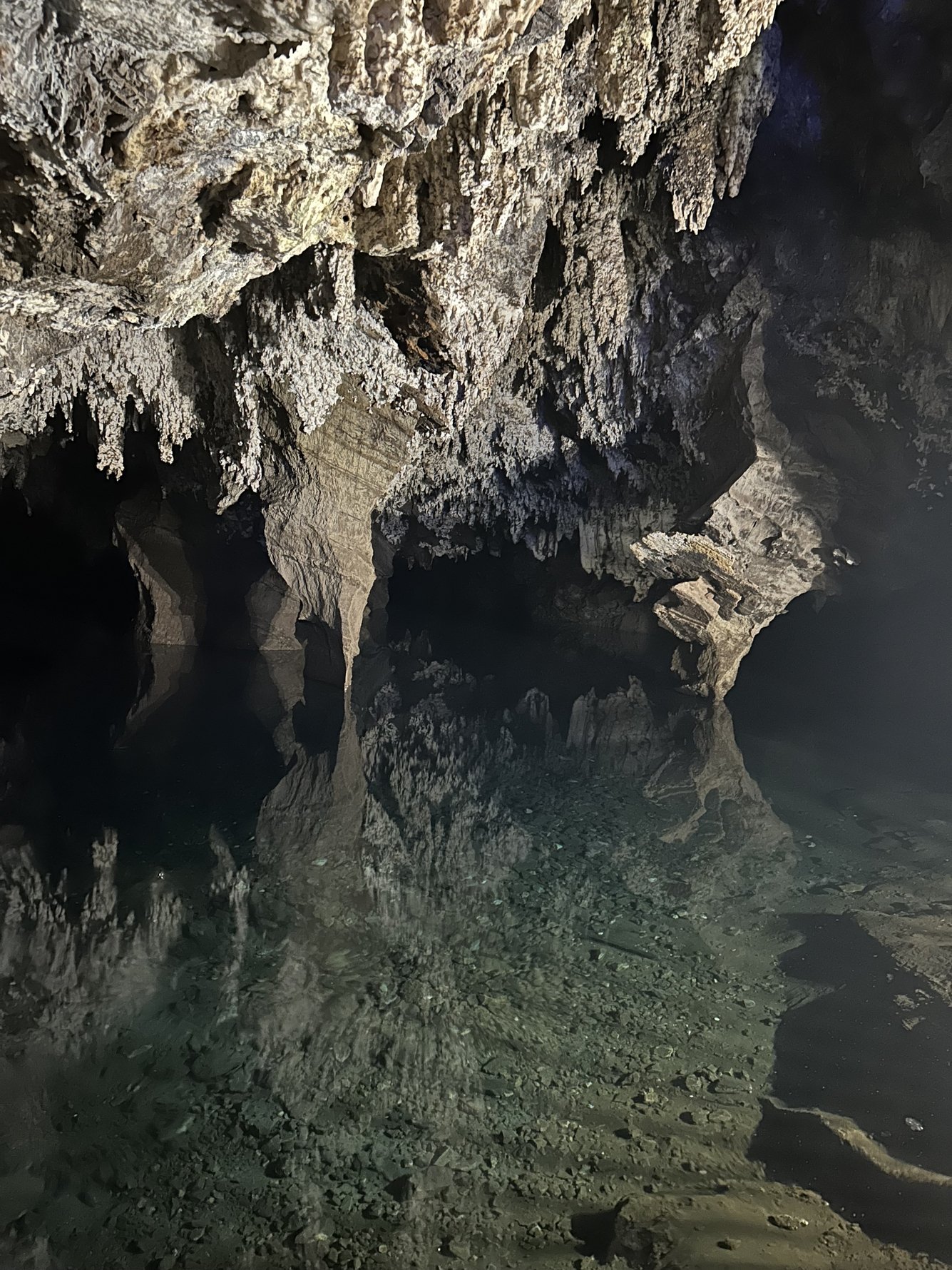
The Sterkfontein Caves offer guided tours that take visitors through the dolomitic limestone caves to learn about the discoveries that have been made there. Some points of interest include the lime kilns used by miners, the geology of the cave at its entrance, the Silberberg Grotto where Little Foot was discovered, the Mildner Hall excavations, the lake, the Tuff Chamber, and the surface excavations where Mrs Ples was found.
The site also has a preparatory laboratory where fossils are cleaned and catalogued, a temporary exhibition space, and the museum where you can learn more about the history of the caves and the significant discoveries that have been made there.
A 15-minute drive from the caves, Maropeng is also well worth a visit. Wits offers combined ticket options that include visits to both places.
BOOK A GUIDED TOUR
A tour of the Sterkfontein Caves takes approximately one hour to one hour and 30 minutes. Tickets for the Sterkfontein Caves tour are R150 p.p. for adults, R125 p.p. for children between six and 18 years, and free for children under the age of six. Pensioners pay R100 p.p. and if it's your birthday, you can enter for free (proof of ID required). Note: There is no real age restriction but kids must be accompanied by parents or guardians.
Tickets can be purchased on-site; it is advised that you call ahead before your visit to confirm tour availability. Alternatively, book your tickets online here.
OPENING HOURS AND CONTACT DETAILS
The Sterkfontein Caves are open Tue – Sun from 09:00 – 16:00. There is a tour every hour, and the last tour leaves at 16:00. Call +27 11 717 9946 or email info.sterkfonteincaves@wits.ac.za. Visit sterkfonteincaves.wits.ac.za for more information.
HOW TO GET THERE
The Sterkfontein Caves are located on Kromdraai Road in the Cradle of Humankind in Muldersdrift. They are close to Kurgersdorp, and about 50km northwest of Joburg. To get there from Joburg, take the M5 past Ngwenya Glass Village and over the N14 until you reach the R374, where you turn left. Follow the road past Nirox Sculpture Park and turn left onto the R540. Just a short distance further, turn right onto Sterkfontein Rd (which becomes Sterkfontein Caves Rd), then turn left onto Sterkfontein Grotte Weg. You will find the caves at the end of the road. The coordinates of the Sterkfontein Caves are 26°00'59.6"S 27°44'01.0"E.
IS THERE PARKING AT THE STERKFONTEIN CAVES?
Parking is available on-site at the Sterkfontein Caves Visitors Centre.
ACCESSIBILITY
The museum, fossil preparation laboratories, and the "Timeline Walk" are accessible by wheelchair. The Sterkfontein Caves has narrow passages, tight spaces, and dark areas and are thus not accessible by wheelchair. Stairs have to be navigated at different points along the tour. The tour might prove difficult for anyone with claustrophobia or mobility challenges. (Though we will say, a member of our team was pleasantly surprised by how spacious the caves are inside. So don't discount a visit immediately.)
WHAT TO WEAR
It is best to wear clothing that can get dirty, is comfortable, and that will not get in your way. Avoid loose clothing or dresses, and wear closed-toed shoes that can handle slippery spots. The caves maintain a temperature of 20°C, so you might want to take something warm if you get cold easily. You will be given a safety helmet by your tour guides.
IS THERE A RESTAURANT AT THE STERKFONTEIN CAVES?
There are also many restaurants and coffee shops in the area. Check out our guide for a few ideas.
WHAT ELSE CAN YOU DO IN MULDERSDRIFT?
Muldersdrift is a veritable smorgasbord of activities that include hiking, hot air ballooning, acrobranching, restaurants and coffee shops, museums, art, cycling, stargazing, and sightseeing. Among the highlights are Nirox Sculpture Park, Ground the Venue, Casalinga, and Maropeng Visitors Centre.
For more adventure, see our guides to hiking trails in and around Joburg, the best places to stay in the Cradle of Humankind, and where to go stargazing in Joburg and surrounds.


_m.jpg)
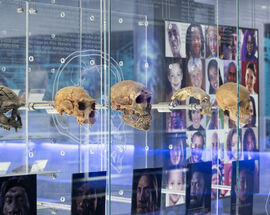
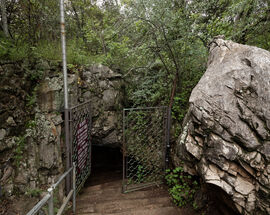


Comments